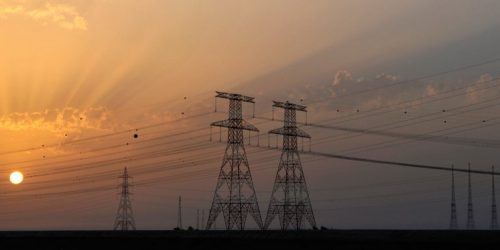Experts have agreed that district-based generation of electricity from renewable energy sources offers more benefits to Pakistan compared to the centralised generation system of large-scale power plants scattered across the country.
At a webinar titled “Energy Investments and Planning” on Friday, they were of the unanimous view that small solar and wind power plants should be installed where the potential of energy generation was high as opposed to establishing large solar parks and wind power plants.
World Bank Renewable Energy Consultant Ermeena Malik was of the view that underserved areas of the country should be the prime focus while setting up new renewable energy plants.
“Pakistan has immense potential of setting up district-wise wind and solar power stations and they can generate low-cost indigenous energy,” she remarked.
She pointed out that such a network would drastically reduce transmission and distribution investment and in some cases it would completely bypass it. However, she emphasised that financing remained the missing link in achieving that goal.
“Financing for such power plants will become a huge issue in the next 5-10 years and a lot of people will be talking about it,” she said. “It will be the largest roadblock, hindering the improvement of power infrastructure in Pakistan.”
In addition to that, project financing was not offered to power distributors and generators in Pakistan, even for relatively large installations aimed at industrial or commercial consumers, she said.
According to her, this is perhaps the biggest hurdle in the way of growing the power sector and leveraging it. She underlined that the lack of financing acted as a constraint to sustainable energy supply to consumers.
Drawing comparisons with India, Malik regretted that per capita energy consumption in Pakistan stood half in Pakistan. However, she stressed that power demand was bound to rise and it could increase fairly quickly if economic situation improved.
Also present in the session, Planning Commission’s former member energy Akhtar Ali said average power demand per district in Pakistan stood around 300-400 megawatts and one renewable energy plant per district could provide 30,000-40,000MW on average.
He emphasised that the country should only go for renewable energy after 2025 in a bid to become self-sufficient.
The ex-member energy also highlighted that earlier the storage capacity for renewable energy was costly, which now became affordable, hence, Pakistan was in a better position to produce electricity from eco-friendly methods.
Pakistan Electric Power Company’s (Pepco) former managing director Tahir Basharat Cheema highlighted that around 1999-2000, Pakistan had surplus power generation and the country even offered to sell electricity to India.
“At that time, the country did not have to worry about energy but by 2006, Pakistan began facing load-shedding,” he said. “Now in 2020, we are talking about surplus energy when load-shedding is still rampant, hence, we do not have surplus capacity.”
He lamented that power companies resorted to revenue-based load-shedding as the areas providing low revenue faced higher load-shedding. Owing to that strategy, a majority of areas of Khyber-Pakhtunkhwa and Balochistan were suffering, he added.
He stressed the need for efficient energy management and asked the authorities to distribute power to the areas having energy efficiency.
Other topics discussed at the webinar were transformation of Pakistan’s energy infrastructure and elite capture.





